What is the ESC Atlas of Cardiology?
Despite huge advances in cardiovascular medicine, cardiovascular disease (CVD) remains the world's biggest killer.
To better understand why this is the case and how we can reduce CVD mortality, the ESC has been collecting, analysing and reporting on cardiovascular data from across its all the ESC member countries through its 'Atlas of Cardiology' since 2015.
With more than 300 variables pertaining to CVD risk factors, morbidity, mortality and CVD management ESC Atlas is a rich data source with a unique focus on Europe and the Mediterranean basin.
NEW open access ESC Atlas website
 The new ESC Atlas of cardiology website maps the main national and European health policy institutions and health care policies and identifies gaps and disparities in cardiac care. It provides robust data for academics, as well as budget owners and decision-makers who can advance population health at a national and international level.
The new ESC Atlas of cardiology website maps the main national and European health policy institutions and health care policies and identifies gaps and disparities in cardiac care. It provides robust data for academics, as well as budget owners and decision-makers who can advance population health at a national and international level.
To complement the compendium with subspecialty data, data specific to heart failure and interventional data are included through the collaboration of the ESC's Heart Failure Association and the European Association for Percutaneous Cardiovascular Interventions.
Visit ESC Atlas in Heart Failure
Visit ESC Atlas in Interventional Cardiology
ESC Cardiovascular Realities 2024

ESC Cardiovascular Realities 2024 is a unique publication that presents data from ESC Atlas, providing compelling arguments for increasing action to support cardiovascular health policy. This booklet is essential reading for anyone involved in healthcare policy and budget allocation. It includes comprehensive CVD data from the ESC Atlas of Cardiology covering risk factors, health behaviours, access to healthcare and the cost of CVD to the economy in all ESC member countries.
Read ESC Cardiovascular Realities 2024
Read EU 27 Cardiovascular Realities 2025
Previous editions
- ESC Cardiovascular Realities 2022
- ESC Cardiovascular Realities 2020
- ESC Cardiovascular Realities 2019
What does ESC Atlas tell us?
European Heart Journal publication
An analysis of Atlas data was published in the European Heart Journal in August 2024.
Read ESC Cardiovascular Disease Statistics 2024
Key messages from the latest ESC Atlas datasets
- CVD has remained the most common cause of death in ESC area with over 3 million deaths every year including >1.6 million deaths in females and 1.5 million deaths in males.
- Across ESC member countries, CVD accounted for proportionately more deaths in middle-income compared with high-income countries in both females (53% vs. 34%) and males (46% vs. 30%).
- More than 10.2 million people fall ill with CVD every year in ESC member countries.
- Between surveys of ESC member countries in 2019 and 2023, the number of cardiologists per million in high-income countries increased (from a median of 81 to 100). In middle-income countries the numbers have declined during the same period (from a median of 62 per million people to 55). In 2023, females comprised 39% of cardiologists working in ESC member countries.
- The under-resourced status of middle-income countries is associated with a severe procedural deficit compared with high-income countries in terms of coronary intervention, ablation procedures, device implantation and cardiac surgical procedures.
The previous analyses of CVD statistics from ESC Atlas have been published in the European Heart Journal:
- 3rd ESC Atlas edition: Released in December 2021. Read ESC CVD Statistics 2021
- 2nd ESC Atlas edition: released in December 2019. Read ESC CVD Statistics 2019
- 1st ESC Atlas edition: released in November 2017. Read ESC CVD Statistics 2017
Atlas Infographics
The six infographics in the series "Cardiovascular Realities in Europe" present key findings, revealing wide gender and geographic disparities and inequalities.
Data is collected from the ESC Atlas paper and presented in an easily accessible format by theme:
- Risk Factors: smoking prevalence and raised blood pressure
- Premature Deaths
- Number of Cardiologists
- Number of Pacemaker Implantations
- Number of Heart Transplants
Why ESC Atlas
The ESC Atlas maps, analyses and compares from a cardiovascular perspective, the status of the healthcare systems in more than 57 countries in ESC member countries. It presents evidence of trends, disparities, gaps and associations between fundamental variables, which can be used to elicit valuable insights for evidence-based health policy in cardiology.
The ESC Atlas reveals the serious disparities in service provision and cardiovascular outcomes across systems, as well as significant issues in health care management and many other gaps existing in Europe. All data converge to reinforce the need to make cardiovascular disease the number one health priority for any decision maker.
The Atlas helps the ESC to better fulfil its mission
The Atlas provides the ESC and its institutional members with a wealth of robust evidence, analyses and comparisons. It will inform new and stronger ESC recommendations as well as calls for action, supporting our efforts to shape cardiovascular policy and, regulation. The ESC and its participating member societies will provide key decision-makers with better elements than ever before that will inevitably influence the allocation of funds for prevention, treatment, education and research.
The Atlas reinforces further the ESC and participating member societies unified call for harmonisation of standards of care to achieve the best possible patient outcomes across Europe.

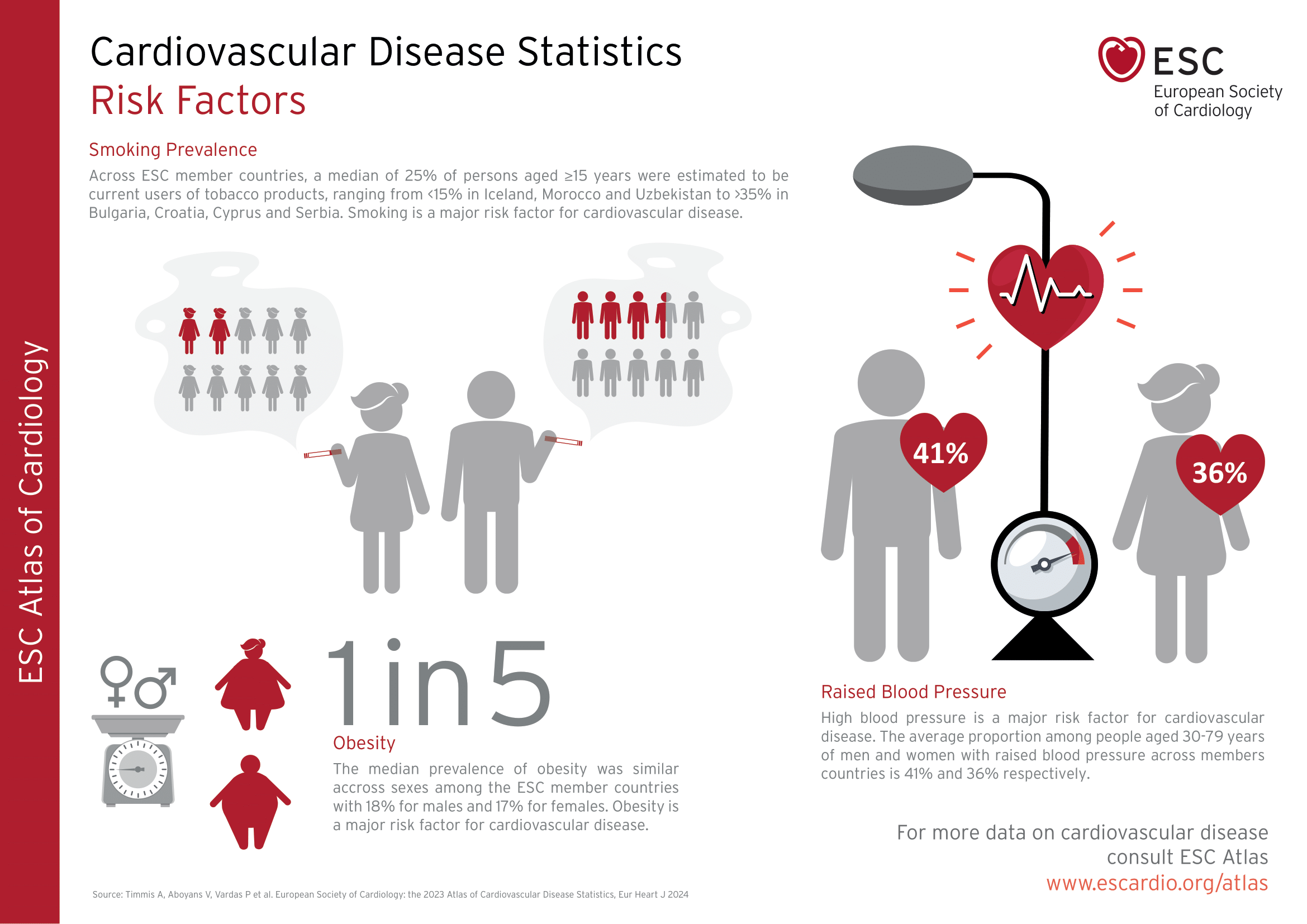
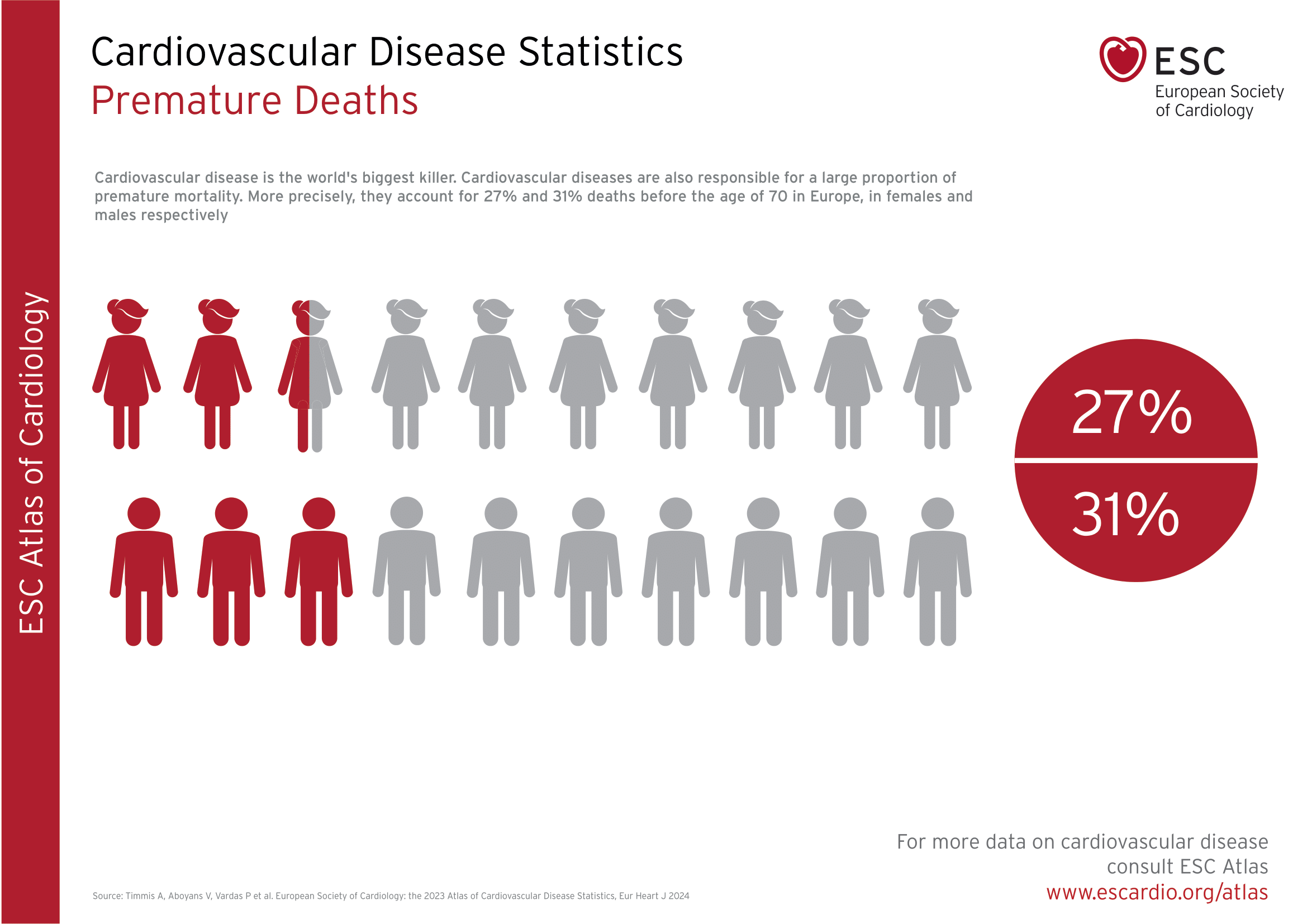
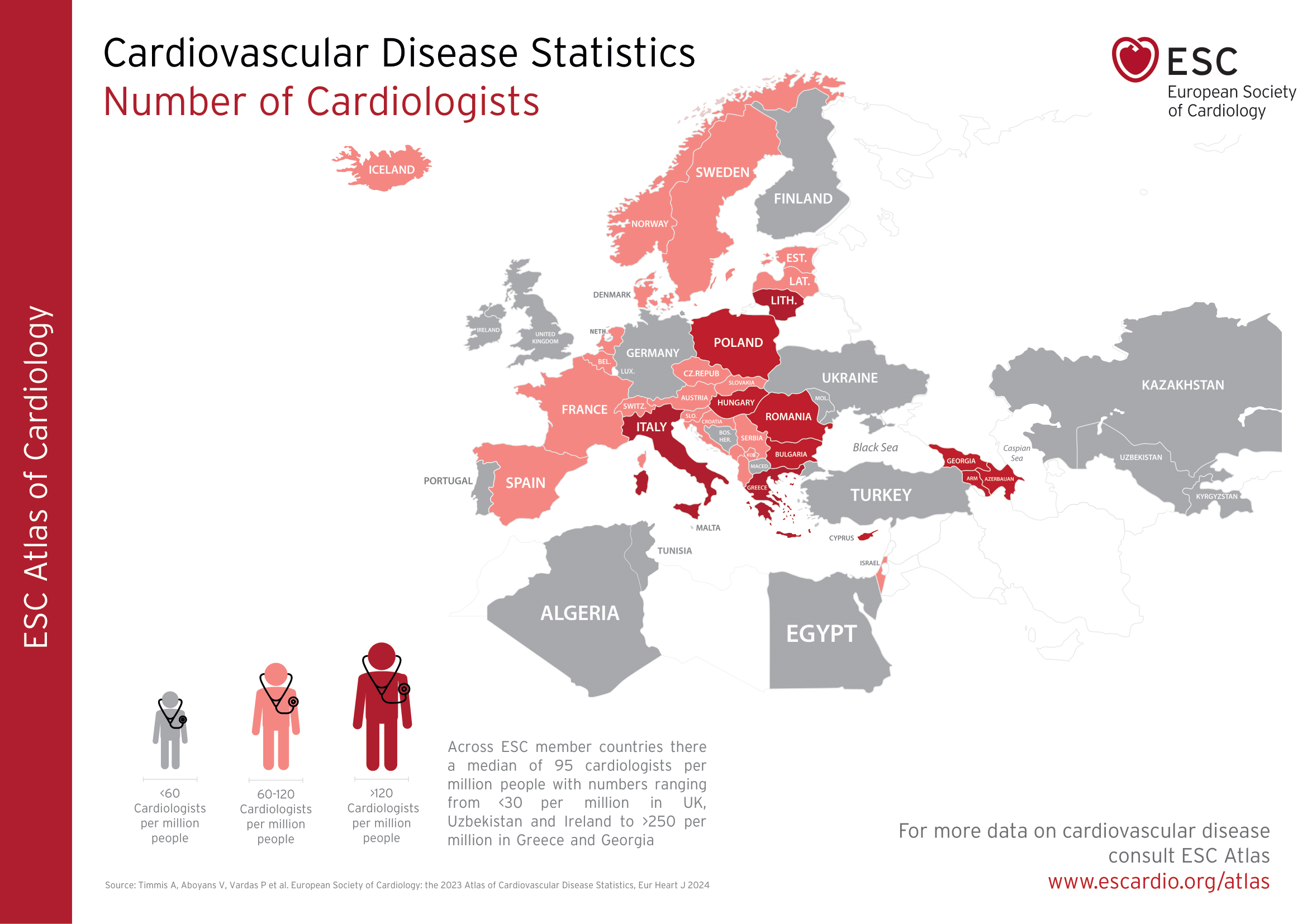
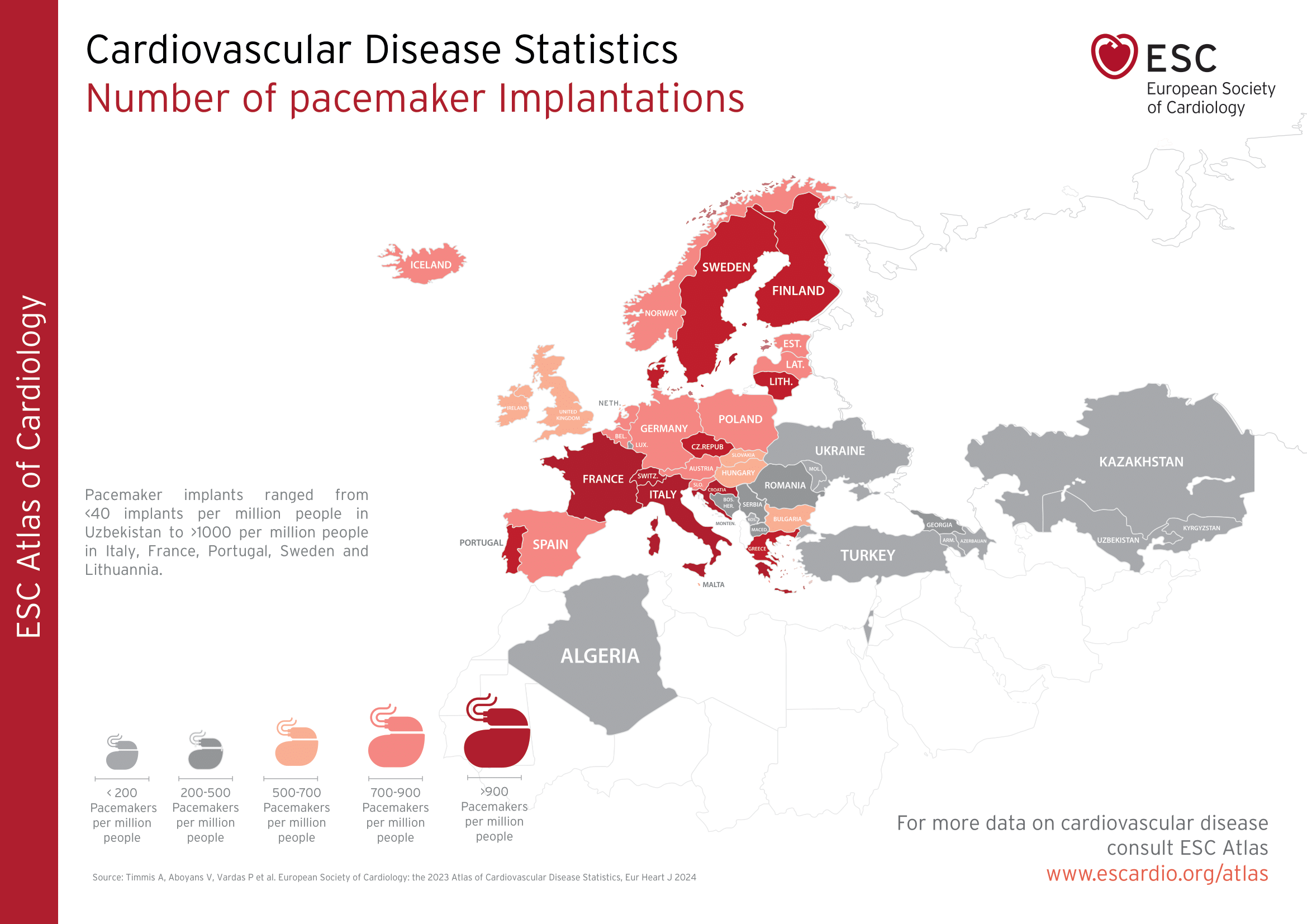
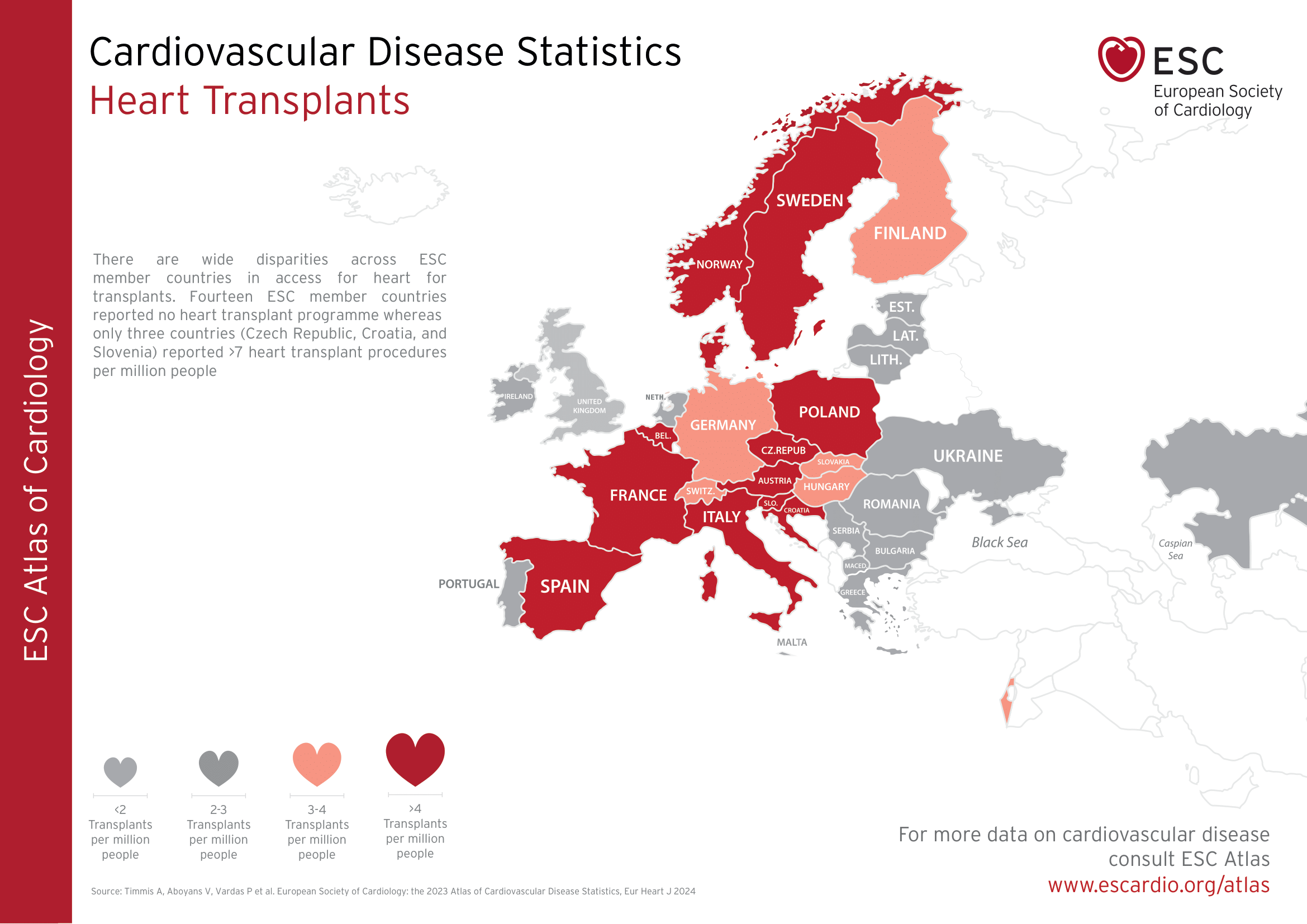
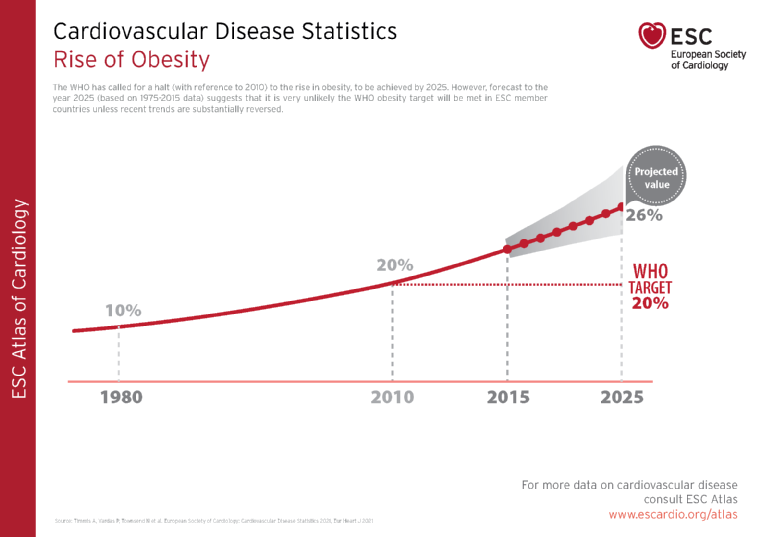
 Our mission: To reduce the burden of cardiovascular disease.
Our mission: To reduce the burden of cardiovascular disease.